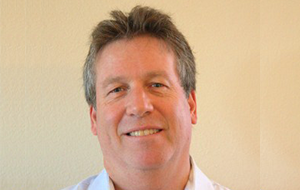How can a smaller company attract technology talent when major tech players are located in the same market? The secret is selling what makes your company, and the opportunities it offers, as unique. That advice comes from Chuck Kring, CTO and vice president of engineering at Internet of Things platform Arrayent. In an interview with The Enterprisers Project, Kring explains how his company brings in talent in a competitive marketplace.

The Enterprisers Project (TEP): How does Arrayent find, recruit, and attract top talent?
 Kring: Arrayent has a smart team, and IoT is an interesting space. Working at Arrayent means working on a strong team on leading-edge products and technologies. We look for aggressive, smart people who want to work in that type of environment.
Kring: Arrayent has a smart team, and IoT is an interesting space. Working at Arrayent means working on a strong team on leading-edge products and technologies. We look for aggressive, smart people who want to work in that type of environment.
TEP: In a crowded marketplace of employers, how do you raise awareness of Arrayent?
Kring: Arrayent publishes job descriptions on a variety of job boards and social media. We also recruit via internal reference.
TEP: You're located in Silicon Valley, where some of the world's biggest and most high-profile tech companies also are hiring — and some are known for the cushy perks they provide. How do you compete for talent in this environment?
Kring: Arrayent is a small company, and our employees tend to take on a larger role than they would in a large company. They have the ability to make a significant difference to the company outlook. For our employees this is more important than a cafeteria, especially considering we are in an urban area with numerous restaurants within walking distance.
TEP: How important are non-monetary benefits in your compensation package? Which ones are most important for bringing in the talent you need?
Kring: Arrayent offers competitive salaries, an incentive stock plan, and good benefits. In today's job market these are table stakes; they are necessary but not sufficient for attracting top talent. Our most important non-monetary benefit is the career growth and satisfaction that comes from working on leading-edge technologies in a hot market.
TEP: Do you evaluate new hires against your company culture? What are some ways to ensure a good long-term fit?
Kring: At Arrayent we do evaluate potential employees on technical and cultural fit. We highly value employees who can work in a fast-paced startup environment while meeting high standards of quality. Having said that, we are a small, tightly-knit company and it's essential that potential employees can operate in our culture.
This might sound elementary but a few simple things are highly deterministic. Does a potential employee understand and want to work on IoT? Have they every played with a Raspberry Pi or some other device? Do they go to meetups? At the end of the day we are looking for people who want to work on IoT at our company. We tend to not pick people who are just looking for a job.
TEP: How can you keep recruiters from poaching your employees?
Kring: We can't prevent recruiters from trying, so we focus on retention. The Arrayent management team believes it's important to create an environment where our employees are not interested in returning recruiters' calls. We continually work at making sure people are happy, respected and are working on interesting projects.
TEP: What advice would you offer CIOs, especially those at companies that aren't a household name, about finding, recruiting, attracting, and keeping top tech talent?
Kring: Make sure that the company offers a satisfying reason for employees to join. Top tech talent can easily get market compensation from a variety of employers, so it's important to sell career growth, societal benefits or saving the world. Arrayent offers experience in IoT infrastructure and a smart team, but every company is different, and it's the hiring manager's responsibility to answer: Why us? Why now?






